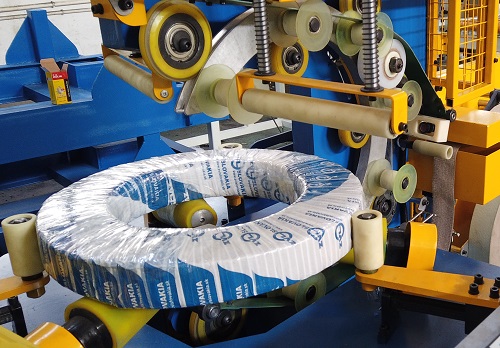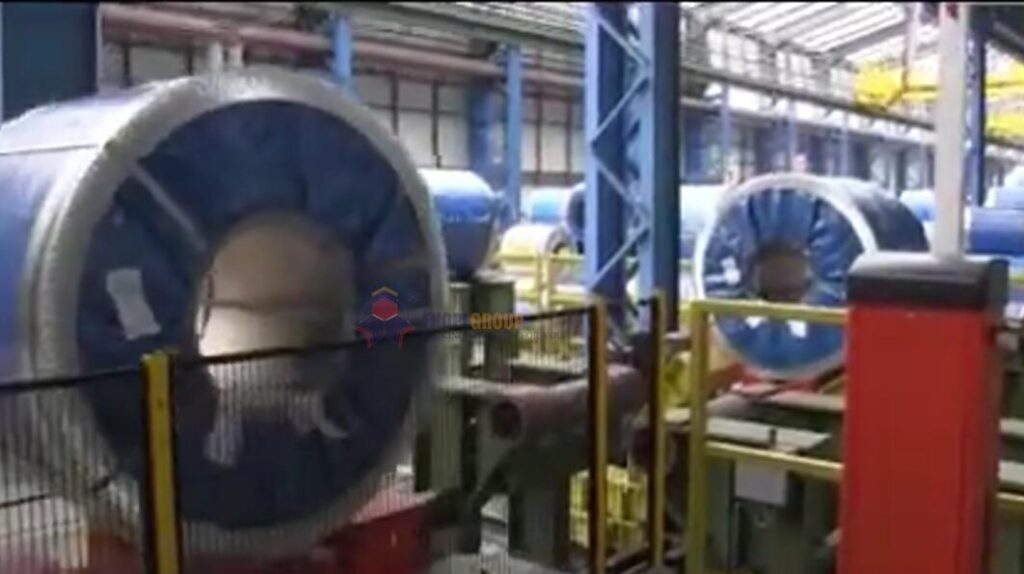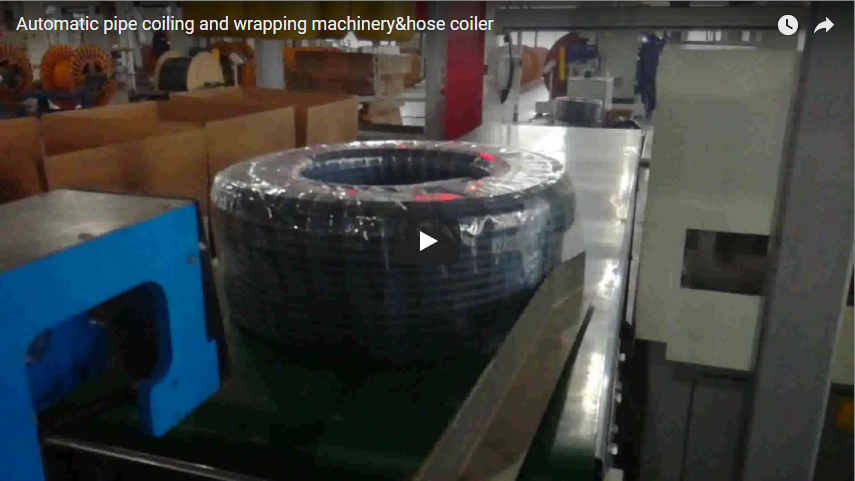Optimizing safety in steel coil packaging operations is paramount, not just for regulatory compliance but for operational efficiency and workforce well-being. Steel coils, often weighing several tons, present significant handling challenges. Incidents involving coil handling can lead to severe injuries and costly damages. According to industry safety reports, improper handling and securing of heavy materials like steel coils remain a major cause of workplace accidents in the metals and logistics sectors. Enhancing safety protocols is a critical investment in mitigating these risks.
This article delves into five essential strategies, integrating insights from industry best practices and technological advancements, to bolster safety throughout the steel coil packaging lifecycle. Implementing these measures can lead to a demonstrable reduction in incidents, safeguard valuable products, and foster a culture of safety excellence.
1. Conduct Comprehensive Risk Assessments Tailored to Coil Handling
A foundational step towards enhanced safety is a meticulous risk assessment. This goes beyond basic hazard identification and involves a systematic evaluation of the entire coil packaging workflow – from receiving and initial handling to wrapping, strapping, storage, and final dispatch. Methodologies like Hazard and Operability Studies (HAZOP) or Failure Modes and Effects Analysis (FMEA) can be adapted for this purpose.
- Identify Specific Hazards: Focus on risks unique to steel coils:
- Stored Energy: Coils can shift or unspool unexpectedly if not properly secured.
- Pinch Points: High-risk areas exist around handling equipment (upenders, tilters, cranes, forklifts) and during strapping/banding operations.
- Falling Loads: Risk during lifting, transport, and stacking due to inadequate rigging, equipment failure, or unstable loads.
- Sharp Edges: Potential for lacerations during manual handling or material preparation.
- Evaluate Equipment and Machinery: Regular inspections and preventive maintenance, adhering to manufacturer guidelines and standards like OSHA 1910.179 (for cranes), are crucial. Analyze potential failure points in wrapping machines, strapping tools, conveyors, and lifting devices. Document inspection frequency and findings.
- Assess Environmental and Ergonomic Factors: Analyze workspace layout for safe clearance, adequate lighting (essential for visual inspection), floor conditions (preventing slips/trips), and noise levels. Evaluate manual tasks for ergonomic risks (lifting, pushing, pulling) and implement ergonomic interventions.
A robust risk assessment provides the data needed to prioritize safety investments and develop targeted control measures, forming the bedrock of a proactive safety management system.
2. Implement Advanced and Continuous Worker Training Programs
Well-trained personnel are indispensable for safe operations, especially when interacting with heavy machinery and materials. Training programs must be comprehensive, role-specific, and regularly refreshed.
- Equipment Operation Proficiency: Training must cover the safe operation of specific machinery used, including coil wrapping machines, automated strapping systems, forklifts equipped with coil rams, and overhead cranes. This includes understanding load capacities, control interfaces (HMIs), safety interlocks, and emergency stop procedures. Competency assessments should verify understanding and practical skill.
- Safe Handling and Load Securement: Workers need training on correct lifting techniques (manual and mechanical), proper use of rigging equipment (e.g., C-hooks, coil lifters), and standardized communication signals (hand signals, radio protocols) during lifts. Specific training on load securement principles for storage and transport, considering coil orientation (eye-to-sky vs. eye-to-wall) and transport mode, is vital.
- Emergency Response and Hazard Recognition: Training should cover procedures for equipment malfunctions, fires, spills (if applicable), and medical emergencies. Workers must be skilled in recognizing potential hazards and empowered to stop work if unsafe conditions arise (Stop Work Authority).
- Continuous Learning Culture: Safety training isn't a one-off event. Regular toolbox talks, safety briefings before complex tasks, and annual refresher courses ensure knowledge remains current. Updates on new equipment, revised procedures, or lessons learned from near-misses should be incorporated promptly.
3. Leverage Automation for Enhanced Safety and Efficiency
Integrating automated coil packaging systems offers one of the most significant leaps forward in mitigating manual handling risks and improving packaging consistency. Automation shifts personnel away from hazardous zones and performs repetitive, heavy tasks reliably.
- Minimizing Manual Exposure: Automated systems for coil transport (conveyors, AGVs), tilting/upending, strapping (automatic strap feeding, tensioning, sealing), and wrapping drastically reduce the need for operators to be in close proximity to heavy, moving coils. This directly lowers risks of crushing, pinching, and musculoskeletal injuries. Research indicates automation can significantly cut down manual handling incidents in heavy industries.
- Precision and Consistency: Automated systems apply packaging materials (stretch film, VCI paper, strapping) with consistent tension and placement, ensuring load stability and integrity. This uniformity, difficult to achieve manually, is critical for preventing load shifts during subsequent handling and transport. Some systems incorporate sensors to verify correct material application.
- Integrated Safety Features: Modern automated lines are designed with safety as a priority, incorporating features mandated by safety standards (e.g., ISO 13849):
- Perimeter Guarding: Physical barriers and light curtains prevent unauthorized access during operation.
- Emergency Stops: Easily accessible E-stops integrated throughout the line.
- Interlocks: Safety gates and access points are interlocked to halt machinery if opened.
- Sensors: Presence-sensing devices detect personnel or obstacles in hazardous zones.
- Technological Advancements: Recent innovations include robotic handling for precise coil placement, vision systems for quality inspection of wrapping/strapping, and data logging for process monitoring and traceability, further enhancing both safety and quality control. Patents often highlight novel mechanisms for safer automated coil manipulation and packaging (e.g., improved coil centering or clamping mechanisms).

4. Establish Rigorous Storage and Transportation Protocols
Safety vigilance must extend beyond the packaging line to encompass storage and transportation. Improperly stored or secured coils are a major safety liability.
- Engineered Storage Solutions: Utilize storage systems specifically designed for heavy coils. This includes:
- Saddles/Cradles: Preventing coils from rolling, designed for specific coil diameters and weights.
- Racking Systems: Heavy-duty racks engineered to support coil loads, often incorporating features to prevent dislodgement. Ensure racks are installed on suitable foundations and regularly inspected for damage or deformation.
- Designated Areas: Clearly marked storage zones with adequate spacing for handling equipment maneuverability.
- Secure Load Transportation: Whether moving coils within the facility or shipping externally, robust load securement is non-negotiable.
- Internal Transport: Use appropriate equipment like coil grabs, C-hooks, or forklifts with coil rams. Ensure operators are trained on load stability and path planning.
- External Transport (Truck/Rail/Sea): Adhere strictly to regulations (e.g., FMCSA cargo securement rules). Use high-tensile strapping, blocking, and bracing methods suitable for the coil's weight and transport mode. Specialized coil transport fixtures (e.g., coil cars for rail) enhance safety significantly. Consider friction mats to prevent slippage.
- Routine Infrastructure Checks: Regularly inspect storage racks, transport vehicles (internal and external carriers if applicable), chocks, blocks, and strapping materials for wear and tear. Implement a documented inspection and maintenance program for all handling and transport equipment.

5. Reinforce Personal Protective Equipment (PPE) Usage and Selection
While engineering controls and automation are primary safety measures (following the hierarchy of controls), Personal Protective Equipment (PPE) remains a crucial final barrier protecting workers from residual hazards.
- Task-Specific PPE: Mandate and enforce the use of appropriate PPE based on job tasks identified in the risk assessment:
- Head Protection: Hard hats in areas with overhead lifting or potential falling objects.
- Foot Protection: Steel-toed boots with metatarsal guards, especially during coil handling.
- Hand Protection: Cut-resistant gloves (appropriate ANSI cut level) for handling coils or strapping; impact-resistant gloves when necessary.
- Eye Protection: Safety glasses or goggles to protect against flying debris or strap recoil.
- Hearing Protection: In areas with high noise levels from machinery.
- Ergonomic Aids: While not technically PPE, providing ergonomic aids like back support belts (based on assessment) for specific, unavoidable manual tasks can help mitigate strain, though engineering controls are preferred.
- PPE Program Management: Implement a comprehensive PPE program that includes:
- Proper Selection: Ensuring PPE meets relevant safety standards (e.g., ANSI, EN).
- Fit Testing: Ensuring proper fit for items like respirators (if needed) or safety eyewear.
- Training: Educating workers on the correct use, limitations, care, and maintenance of their PPE.
- Inspection and Replacement: Regularly inspecting PPE for damage and replacing it when worn out or compromised. Ensure adequate supply and easy access.
Consistent enforcement and management commitment are key to ensuring PPE effectiveness.
Conclusion: Building a Resilient Safety Culture in Coil Packaging
Enhancing safety in steel coil packaging requires a multi-layered approach, moving beyond mere compliance to instill a deep-rooted safety culture. The substantial weight and inherent risks associated with steel coils demand continuous vigilance. By systematically implementing comprehensive risk assessments, delivering robust training, strategically leveraging automation, adhering to strict storage and transportation protocols, and ensuring correct PPE usage, companies can significantly mitigate hazards.
The integration of automation and data-driven safety management systems, as highlighted in industry publications like Packaging World, represents the future of safe and efficient coil handling. However, technology alone is insufficient. A successful safety program relies on management commitment, worker involvement, and a continuous improvement mindset. Prioritizing safety is not just an operational necessity; it's a strategic advantage, protecting valuable personnel, preserving assets, enhancing productivity, and ultimately strengthening the company's bottom line in the competitive metals industry.






